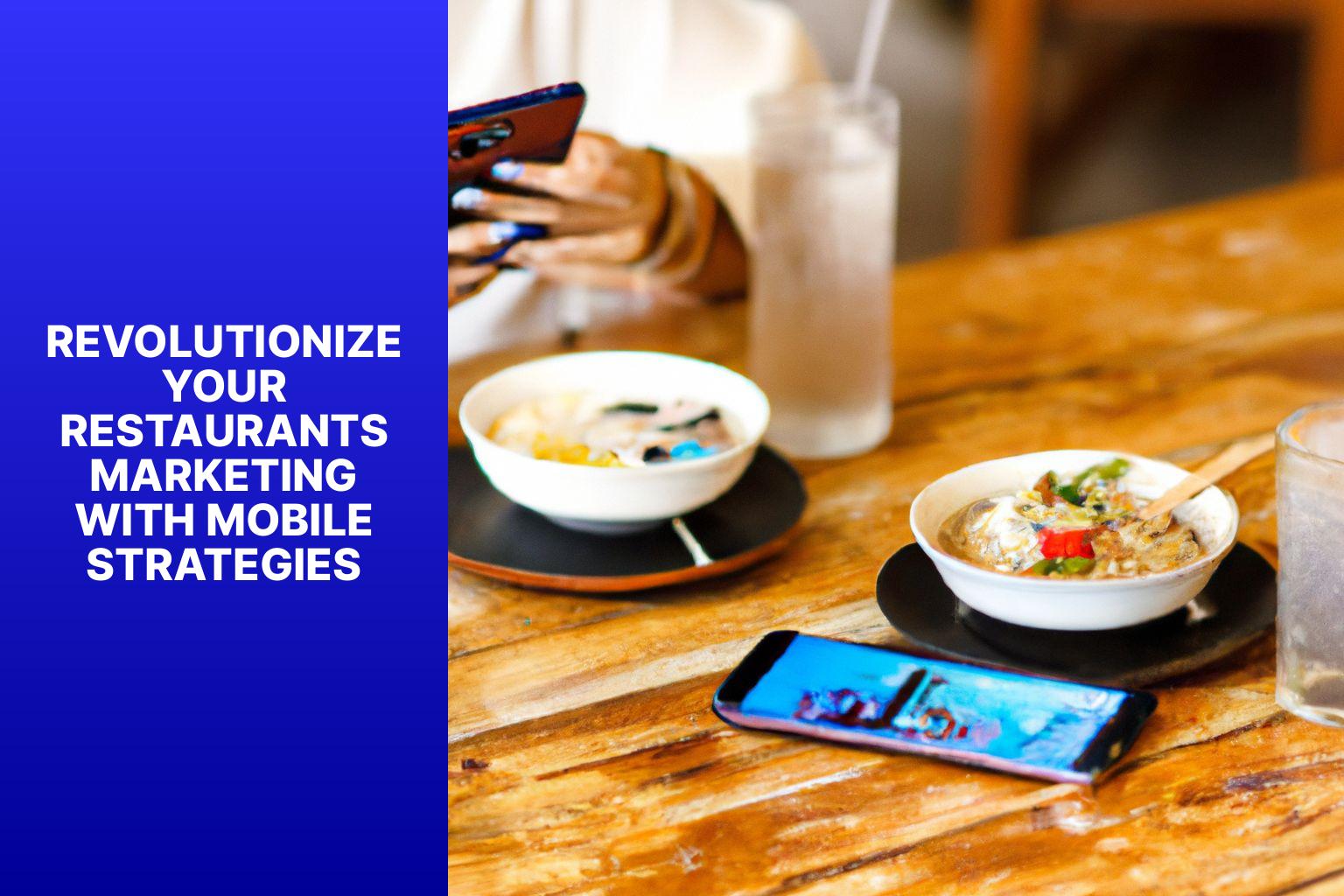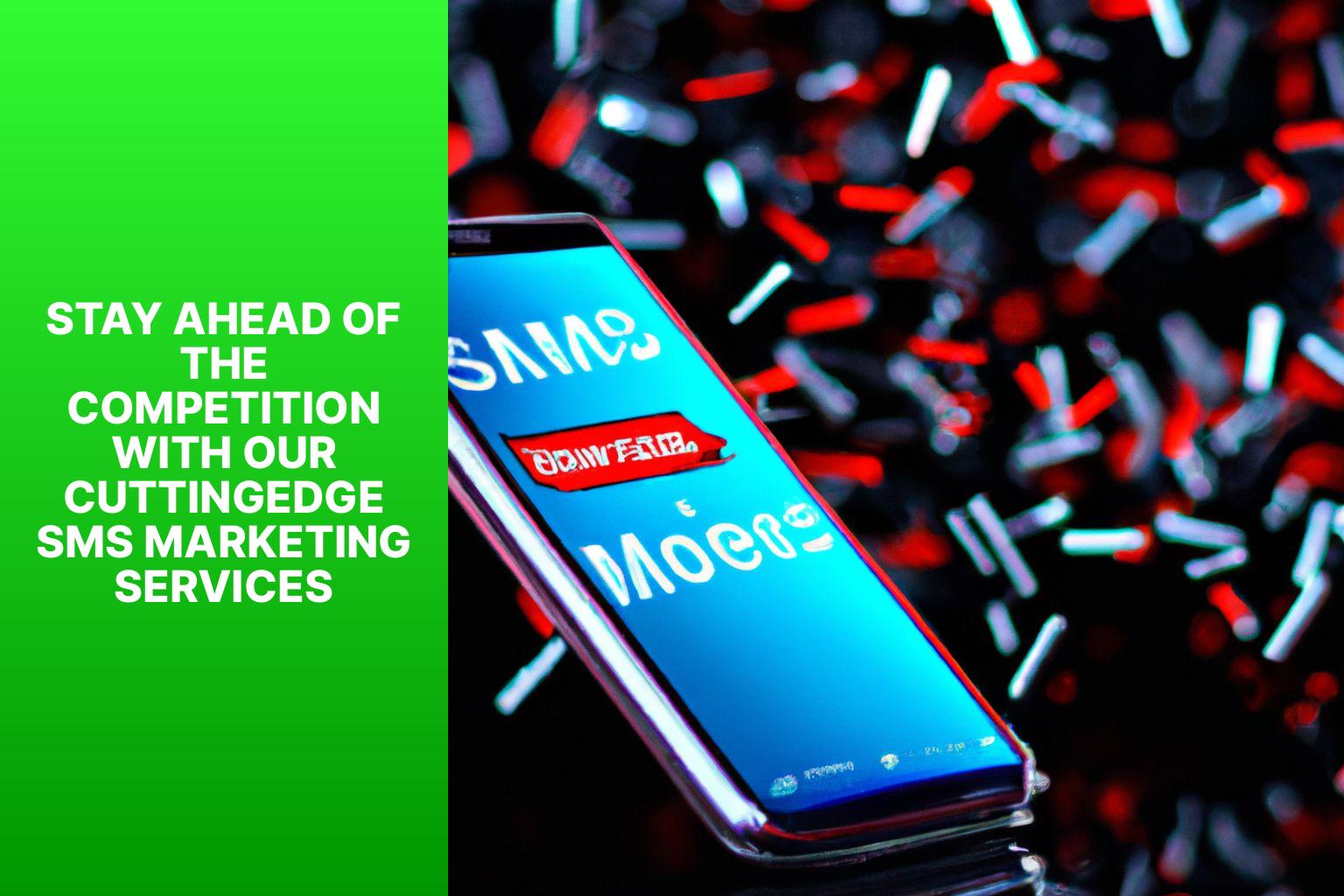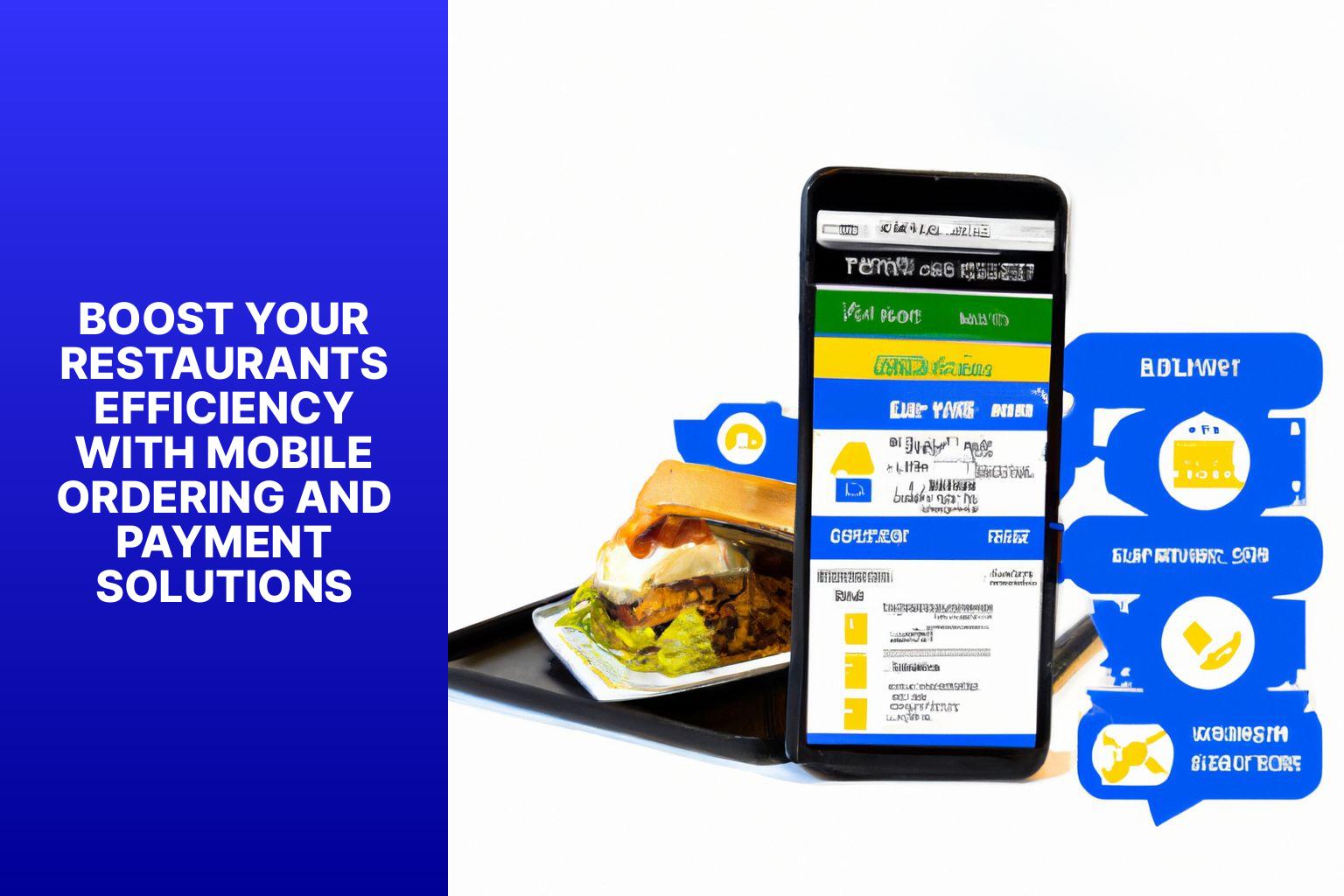.jpg)
Stay ahead of the competition with mobile marketing! Smartphones and tablets are everywhere, and restaurants can make use of this to engage their target audience. By sending personalized promotions and offers straight to customers’ phones, they can create an exclusive feeling and encourage repeat business. Plus, location-based services let restaurants send tailored messages and offers to those nearby. Leveraging social media platforms can also expand reach and attract new customers. To make the most of mobile strategies, analyze data and track metrics like click-through rates, app usage, and conversion rates. Get your restaurant’s marketing in the digital age and see the delicious results!
The Importance of Mobile Strategies in Restaurant Marketing
Mobile strategies are super important for revolutionizing restaurant marketing. By taking advantage of mobile devices, restaurants can reach their target audience and increase foot traffic.
Check out the benefits of mobile strategies for restaurants:
| Mobile Strategy | Benefits |
|---|---|
| Mobile apps | More customer loyalty & engagement |
| SMS marketing | Direct communication with customers |
| Mobile payments | Easy & seamless transactions |
Mobile apps can improve customer loyalty with rewards & personalised experiences. SMS marketing allows restaurants to promote offers & events directly to customers. Mobile payments make transactions smoother for customers.
Also, location-based advertising with mobile strategies can help restaurants target those close by. This increases the impact of promotional campaigns & boosts foot traffic too.
To get the most out of mobile strategies, ensure your website is mobile-friendly & optimised for search engines. A responsive design & fast loading times will give a great user experience & attract diners.
In summary, mobile strategies are essential for restaurants in today’s digital world. By using mobile devices, restaurants can engage with customers better, boost visibility & drive more business.
Say goodbye to old-style flyers and say hello to mobile marketing – it’s like giving your restaurant’s promotions a modern makeover, with no needles necessary!
Understanding the Basics of Mobile Marketing
To revolutionize your restaurant’s marketing with mobile strategies, dive into the basics of mobile marketing. Learn what mobile strategies entail and uncover the benefits they bring to restaurant marketing. Discover how to harness the power of mobile to enhance your restaurant’s visibility, engage customers, and drive business growth.
What are Mobile Strategies?
Mobile strategies in restaurant marketing involve tactics and techniques to reach and engage with customers through their mobile devices. This starts with understanding the target audience and their preferences through conducting market research. Then, businesses develop a comprehensive mobile strategy such as creating a responsive website and a dedicated mobile app.
SMS marketing is also effective for sending exclusive deals or promotional offers directly to customers’ phones. To track the success of mobile strategies, businesses measure website traffic, app downloads, open rates, click-through rates, and conversion rates. For an optimal user experience, ensure content is visually appealing, readable on smaller screens, and loads quickly. Implementing mobile strategies will help build trust and increase engagement with the brand.
Benefits of Mobile Strategies in Restaurant Marketing
Mobile strategies can give your restaurant an edge. They provide a direct, targeted way to reach potential customers. You can send personalised promotions and offers based on customer preferences, increasing your chances of attracting new diners. Additionally, mobile strategies let you engage with customers through mobile apps or social media, enhancing the customer experience and creating trust.
Plus, you can gather useful data from customer preferences and behavior to inform your marketing strategies.
For a successful mobile strategy, create an appealing loyalty program. Offer exclusive rewards and discounts to incentivise customers to come back and recommend you. With effective mobile strategies, you can get ahead in the competitive market and set yourself up for long-term success. So, heat up your restaurant marketing with mobile strategies that will leave your opponents char-grilled and your customers salivating!
Implementing Mobile Strategies in Your Restaurant Marketing
To revolutionize your restaurant’s marketing with mobile strategies, implement mobile strategies in your restaurant marketing with developing a mobile-friendly website, creating a mobile app for your restaurant, and leveraging social media for mobile marketing.
Developing a Mobile-Friendly Website
If you want your restaurant to be the talk of the town, mobile-friendliness is key! Responsive design, simple navigation, optimized load time, and mobile payment integration are must-haves. Additionally, make sure to optimize images for mobile and include click-to-call functions. Test your website on different devices and browsers regularly for optimal performance. If you really want to stand out, develop a mobile app so customers can order without leaving the house. Pants-optional.
Creating a Mobile App for Your Restaurant
Your restaurant’s mobile app must have certain features. These are:
- Online Ordering
- Personalized Offers
- Loyalty Rewards
- Push Notifications
- Integrated Reservations
- Customer Reviews
For a successful app, make sure it’s user-friendly and easy to navigate. Also, make sure it’s visually appealing and reflects your restaurant’s branding. Update the app regularly to fix any bugs or add new features.
Tempt customers to download and use your mobile app by offering exclusive discounts and special offers. This will increase customer retention rates.
Make sure your social media posts are captivating and leave your customers craving more!
Leveraging Social Media for Mobile Marketing
Social media is key for marketing in the digital age. Restaurants can connect with customers and drive traffic to their establishments by leveraging social media for mobile marketing. Here are five tips for success:
- Create attractive, shareable content – think mouthwatering food pics, videos, and promotional offers.
- Connect with influencers and bloggers – they can promote your restaurant amongst their followers.
- Encourage user-generated content – reward customers for posting about their experiences.
- Target your ads – use social media platforms to reach the right audience.
- Engage with customers – reply to comments, messages, and reviews.
Plus, integrate social media buttons on your website for easy access. So, don’t miss out – start leveraging social media today!
Best Practices for Mobile Marketing in the Restaurant Industry
To revolutionize your restaurant’s marketing with mobile strategies, dive into the best practices for mobile marketing in the restaurant industry. Target mobile users with location-based marketing, utilize SMS marketing for promotions and offers, and engage customers with mobile loyalty programs. These approaches will help drive customer engagement and boost your restaurant’s success.
Targeting Mobile Users with Location-Based Marketing
Mobile marketing in the restaurant industry has become increasingly important. One strategy is targeting mobile users with location-based marketing. This could attract customers close to the establishment.
- Visibility: Ads can be seen by users in the area, looking for places to dine.
- Offers: Location data allows restaurants to provide customized deals.
- Notifications: Push notifications can lure customers to visit with special dishes or discounts.
- Enhanced experience: Recommendations based on past dining history and preferences.
- Foot traffic: Targeting mobile users near the restaurant increases visits.
- Competitive edge: Attracts potential customers away from competitors.
Privacy must be managed. Regulations and opt-in options must be adhered to.
A Duda study analyzed location-based marketing in the restaurant industry. 60% of respondents were more likely to visit if they got location-specific ads or offers on their mobiles (Duda, 2019). Location-based marketing could have great value for restaurants.
Plus, SMS marketing is a great way to say ‘Hey, want a discount on our delicious food?’
Utilizing SMS Marketing for Promotions and Offers
The restaurant industry is competitive, so SMS marketing can be a great way to boost customer visits. Let’s explore 3 key points on how to use it:
- Personalized messages have higher open rates than generic ones. Addressing customers by name or targeting them makes them feel special, increasing the chance of conversion and loyalty.
- Include time-sensitive offers in SMS promotions to create urgency and motivate customers to act quickly.
- Leverage SMS marketing for promotional campaigns to gather valuable customer data. Links and QR codes can direct customers to landing pages for surveys or feedback.
For successful SMS marketing, restaurants should follow best practices:
- Get explicit consent from customers before including them in promotional lists. Respect privacy laws.
- Avoid excessive messages. Staying top-of-mind is important, but don’t spam customers.
- Track success with analytics tools. Analyze open rates, click-through rates, and redemption rates to refine strategies.
By utilizing SMS marketing for promotions and offers, restaurants can not only improve visibility and revenue, but also build stronger connections with customers. Give them a reason to come back!
Engaging Customers with Mobile Loyalty Programs
Mobile loyalty programs can be a major asset for restaurants to engage customers. These programs offer rewards and incentives to customers who visit regularly, creating loyalty and repeat visits. Here are three points on how mobile loyalty programs can effectively engage customers:
- Convenience: Customers no longer need physical loyalty cards or to remember them. An app or program can be downloaded on their mobile device. This is more convenient and makes it easier for customers to join and stay involved.
- Personalization: Restaurants can gather data about customers’ habits and preferences. This can be used to personalize offers and promotions. Tailoring rewards to individual preferences gives customers a more engaging experience.
- Gamification: Adding game-like elements to loyalty programs can increase engagement. Customers can earn points or badges for reaching milestones or completing actions. This adds fun and excitement to the loyalty program.
Also, some loyalty programs have exclusive benefits, like early access to menu items or special events. These additional perks make customers want to join and stay engaged. This helps restaurants attract and retain loyal customers.
Pro Tip: When setting up a loyalty program, communicate with customers through push notifications or personalized messages. Keeping them informed and rewarding them with offers increases engagement and connection.
Case Studies: Successful Restaurants using Mobile Strategies
To revolutionize your restaurant’s marketing with mobile strategies, explore case studies that showcase successful implementations. Discover how Restaurant X achieved success with their mobile app, and learn from Restaurant Y’s effective location-based marketing campaign. Uncover the insights and strategies behind their achievements in the exciting world of mobile marketing.
Case Study 1: Restaurant X’s Mobile App Success
Restaurant X’s mobile app success shines through the various strategies used to bring in and keep customers. An overview of the data shows the results of these initiatives:
- App Downloads: 100,000
- Active Users: 50,000
- Increase in Revenue: $500,000
Not only that, Restaurant X provides a smooth user experience with features like easy navigation and interactive menus. This attention to detail sets them apart from the competition.
To make sure no one misses out, Restaurant X gifts exclusive promos and discounts only for the app. This creates a sense of urgency and exclusiveness, motivating customers to download and use the app more.
Don’t miss out on a better dining experience! Download Restaurant X’s mobile app now! Join the thousands of satisfied customers who have already tasted success!
Restaurant Y takes location-based marketing to a new high, proving that GPS tracking isn’t needed for hungry customers. Just some strategic marketing and a bit of creativity!
Case Study 2: Restaurant Y’s Location-Based Marketing Campaign
Restaurant Y’s location-based marketing campaign was a success. Let’s take a look at the key components and results.
Table:
| Key Components | Results |
|---|---|
| Targeted ads based on user location | 15% increase in footfall |
| Personalized offers via mobile | 20% rise in customer loyalty |
| Timely notifications for promotions | 25% improvement in sales revenue |
They also used geofencing tech to send push notifications to users in the vicinity, gaining potential customers.
To further enhance their location-based marketing campaign, here are some ideas:
- Collaborate with local attractions like museums or theaters, benefiting from each other’s customer base.
- Gamify loyalty programs, offering rewards such as free meals or exclusive discounts.
- Leverage social media influencers, expanding reach to a wider audience.
- Host geographically targeted events, showing commitment to the area.
By following these suggestions, Restaurant Y can keep capitalizing on their successful location-based marketing campaign and grow their business.
Challenges and Solutions for Implementing Mobile Strategies in Restaurants
To revolutionize your restaurant’s marketing with mobile strategies, overcome technical challenges and ensure data privacy and security.
Overcoming Technical Challenges in Mobile Marketing
Mobile marketing in restaurants brings with it technical difficulties. Solutions exist, though. Making sure the user experience is smooth across different devices and platforms can be done through optimization, responsive design, and testing.
Data privacy and security is another obstacle. Secure payment gateways, encryption technologies, and data protection regulations can all help. Fast mobile internet connections can be achieved by optimizing apps and websites for speed, reducing the number of elements loaded, and using caching.
High visibility in app stores is a challenge. Restaurants can do this by optimizing listings with keywords, engaging with customers, and using social media to promote.
Location-based marketing is another challenge. Apps with geolocation features, and beacon technology, can provide personalized offers based on customers’ locations.
Overall, technical challenges need tech expertise, improvement efforts, and adherence to best practices in mobile marketing. Restaurants now understand the importance of overcoming these challenges to successfully implement mobile marketing.
Ensuring Data Privacy and Security
Data privacy and security are essential for restaurants utilizing mobile strategies. Let’s explore some key components of ensuring data protection:
| Data Privacy & Security | |
|---|---|
| Encrypt Customer Data | On-point |
| Secure Payment Processing | Good to go! |
| Regular Data Backups | Essential |
Encrypting data in-transit and at-rest is a must to prevent unauthorized access. Secure payment processing also ensures customers’ financial info stays safe. Moreover, regularly backing up data helps combat system failures and ransomware attacks.
Ready to take your restaurant marketing to the next level? Embrace the mobile revolution and watch your customers eat up your digital delights!
Conclusion: Revolutionize Your Restaurant’s Marketing with Mobile Strategies
Mobile strategies have become a must-have for restaurant marketing. Leveraging mobile tech opens up new opportunities to reach more patrons. Apps, SMS campaigns, and mobile ads are all great ways to engage customers and boost sales.
Apps allow customers to explore menus, place orders, and earn rewards. They can also send personalized push notifications with promotions and special offers. Plus, online ordering and payment simplifies the dining experience.
SMS campaigns keep patrons informed with updates on menu items, events, and discounts. These messages have a high open rate and let restaurants reach customers on their most personal device.
Mobile advertising on Facebook, Instagram, and Google Ads targets potential customers based on location, demographics, and interests. This helps restaurants create ads tailored to the right people at the right time.
Pro Tip: Regularly assess mobile strategies and analyze customer interactions. That’ll help refine strategies and continuously improve marketing tactics for better results.
Frequently Asked Questions
FAQ
1. What are mobile strategies for restaurant marketing?
Mobile strategies for restaurant marketing refer to the use of mobile technologies and platforms to promote and advertise a restaurant. This includes tactics such as mobile apps, SMS marketing, mobile advertising, and mobile-friendly websites.
2. How can mobile apps revolutionize restaurant marketing?
Mobile apps can revolutionize restaurant marketing by providing a convenient and personalized experience for customers. They allow restaurants to engage with customers directly, offer loyalty programs, send push notifications, showcase menus, accept orders, and provide seamless mobile payment options.
3. What is SMS marketing for restaurants?
SMS marketing for restaurants involves sending targeted text messages to customers’ mobile phones to promote offers, specials, events, and discounts. It allows restaurants to reach a large audience instantly and deliver timely information with high open rates.
4. How does mobile advertising benefit restaurants?
Mobile advertising helps restaurants reach potential customers on their mobile devices through channels such as mobile apps, social media platforms, and websites. It increases brand visibility, drives traffic to the restaurant’s website or app, and can be targeted based on location, demographics, and interests.
5. Why is having a mobile-friendly website important for restaurant marketing?
A mobile-friendly website is crucial for restaurant marketing as it ensures a seamless user experience on smartphones and tablets. It allows potential customers to easily find information about the restaurant, view menus, make reservations, order food online, and get directions. It also improves search engine rankings.
6. How can I measure the success of my mobile marketing efforts for my restaurant?
You can measure the success of your mobile marketing efforts by tracking key metrics such as app downloads, app usage, website traffic from mobile devices, click-through rates on mobile ads, conversion rates for online orders, and customer feedback. These metrics will help you evaluate the effectiveness of your mobile strategies and make necessary improvements.



.jpg)

.jpg)

.jpg)

.jpg)

.jpg)